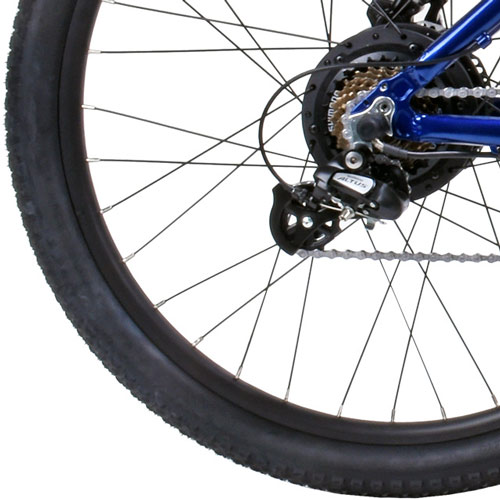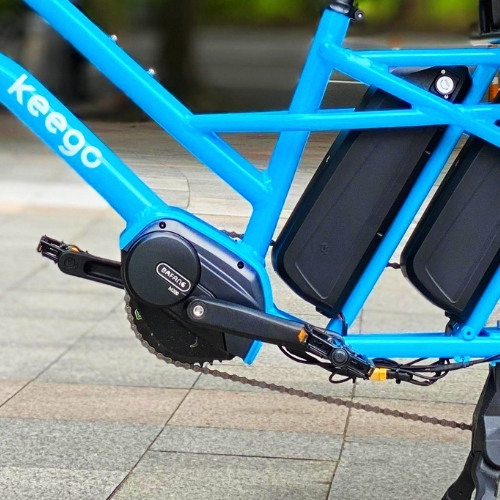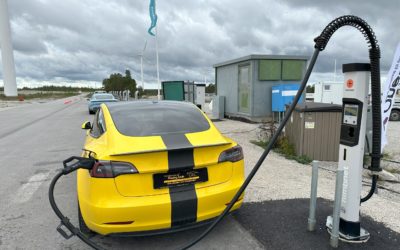E-Bikes are conquering the world. Amazingly, researchers are finding that people who choose a pedal-assist e-bike over a regular, non e-bike, actually get MORE exercise overall since they are able or dare to go farther.
If you are considering purchasing an e-bike there are several choices to make. One of these choices is, should you get an e-bike with a mid-drive motor or a hub motor? What’s the difference? Which will be more suitable for your biking needs?
Hub motors place the electric motor in the center of the bicycle wheel, front or rear. A mid-drive puts the motor in the middle where your pedals and transfers the motor’s power to the rear wheel through the bike’s chain.
What is a Hub Motor?
A hub motor is placed in your e-bike’s wheel, most often the rear wheel. Hub motors are classified into two main types; geared and gearless. The geared hub-drive motor has an epicyclic gear that gradually reduces the RPM of the motor to a slower speed. The gearless motor connects the wheel directly. The gearless hub motor drives your home instantly with no additional gears to reduce the bike’s speed.
What is a Mid-drive Motor?
A mid-drive motor is a type of motor that sits in the middle of your electric bike – right in-between your pedals. The mid-drive motor connects directly to the front gear (chain-ring) and drives the back wheel via the chain.

Rear Hub Drive Motor

Mid Drive Motor
The most significant advantage that mid-motor devices have over hub motors is their gear ratio. The gear ratio allows you to power the rear wheel using the same chain and gear set as the pedals. This means that low gears can be used for accelerating from a stop or when powering up steep hills.
One benefit of a mid-drive motor is that if you ever have to change your back wheel, you do not need to mess with a hub motor as well. It is just as easy to fix a flat tire or change to a winter tire as on a old non e-bike.
Mid-drive motors permit the use of genuine torque sensors for pedal-assist systems, which controls the motor power. However, this is based on the level of intensity you apply on the pedals as calculated at the crank. Hub motors usually rely on RPM sensors for pedal-assist, which only controls motor speed based on the pedal speed.
Disadvantages of Mid-drive Motors
The most significant flaw of mid-drive motors is that they can add extra stress on your bike. A healthy person can comfortable put out 150W and go up to 300W during a sprint. A mid-drive motor provides the power like a whole extra person helping you pedal and it will keep on going until your battery is empty. You need to ensure your bike is sturdy enough to deal with this wear and tear.
Mid-drives have more moving parts under more stress that can potentially break. If the motor system fails, it can be more expensive to replace compared to easily swap out a hub motor. This is more critical for a mid-drive motor that is built directly into the frame of the bicycle.
Advantages of Hub Motors
Generally speaking, hub motors require less or no maintenance at all. They are entirely independent drive systems that retain all of their components inside the motor casing, leaving zero need for service. The two main types have different advantages and disadvantages as well. The gearless hub motors directly connect the lower RPM motor stator’s axle to the bike. Whereas, a geared hub motor reduces the RPM to lower the speed of the bike.
Geared hub motors typically have just one weakness – i.e. the gears. Over regular usage, a tooth can break off, and the reinforced nylon gears stripped eventually. Gearless hub motors have zero moving components apart from their bearings, so there is generally nothing to wear out. As long as they don’t wear down or rust out their bearings, they last longer.
If you have a hub motor, the electric and pedal power are independent. If you would have a bad day and your chain break while you’re out and about, just throw the chain in your backpack and ride home using just electric power. Did your hub motor encounter a failure? No worries. Just pedal back. Either way, there is nothing stopping you.
Perhaps the most significant disadvantage with hub motors is that they only have a single gear ratio. While this is okay for flat-terrain biking, a high torque gear with lower speeds would be preferable for climbing hills. It’s just not as effective to use a single-speed motor when working at a low RPM range under load.
Hub motors are often heavier than mid-drives, and that weight is not sprung weight on suspension bicycles. This can reduce the effectiveness of bicycle suspension and transfer more bumps to the rider.
Rear or Front Hub Motors?
Hub motors can be installed in either rear or front wheels. Front hub motors can balance the e-bike’s weight because bikes are generally heavier on the rear wheel. More powerful front hub motors may cause burnouts with continuous pegging of the throttle. The front forks are also not as robust as the rear dropouts which can cause damage to the front fork. A rear hub motor has the advantage of stronger frame mounting and better traction, this is why Keego prefers rear-mounted hub motors.


